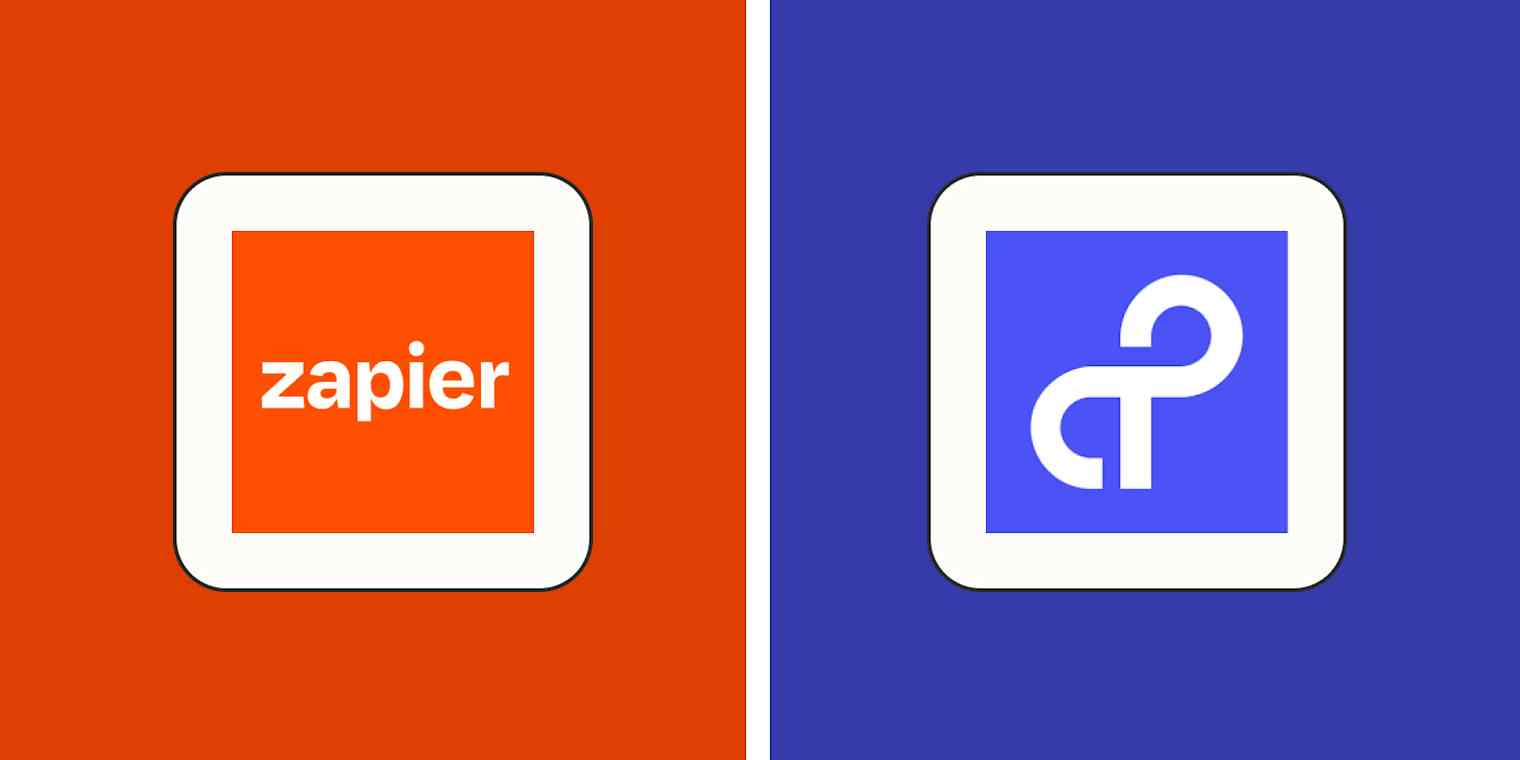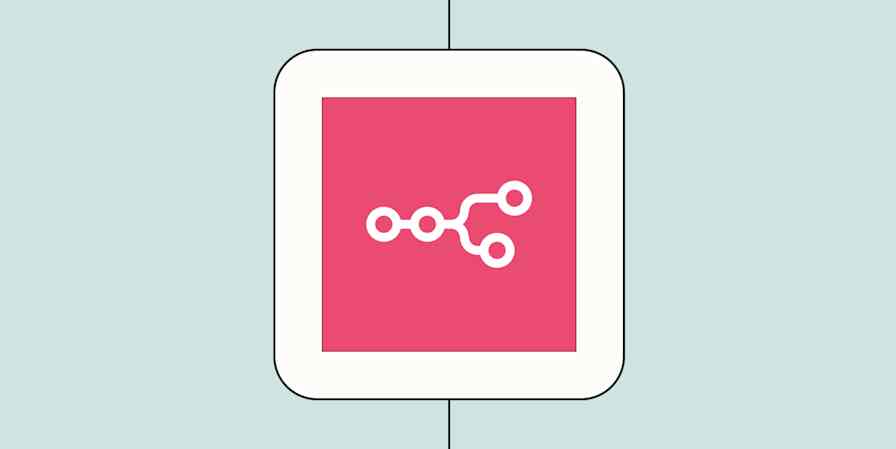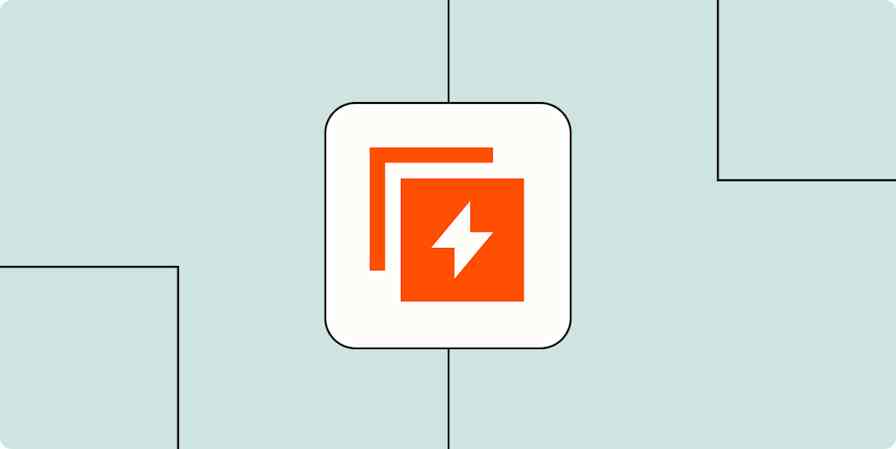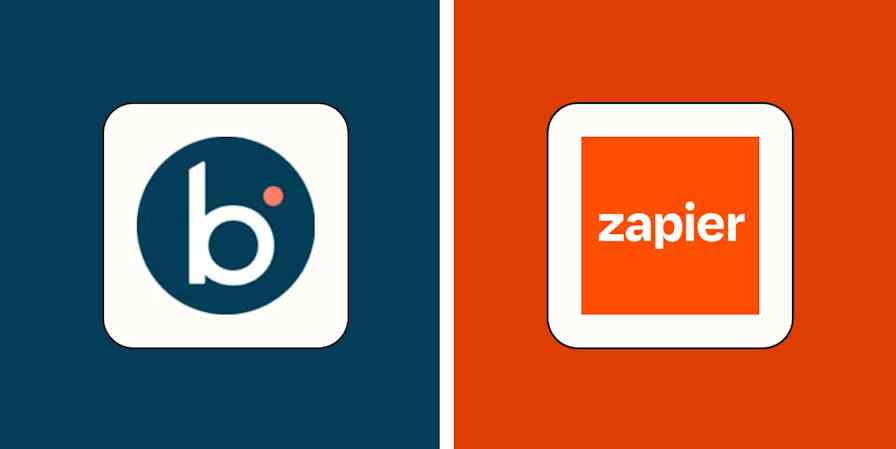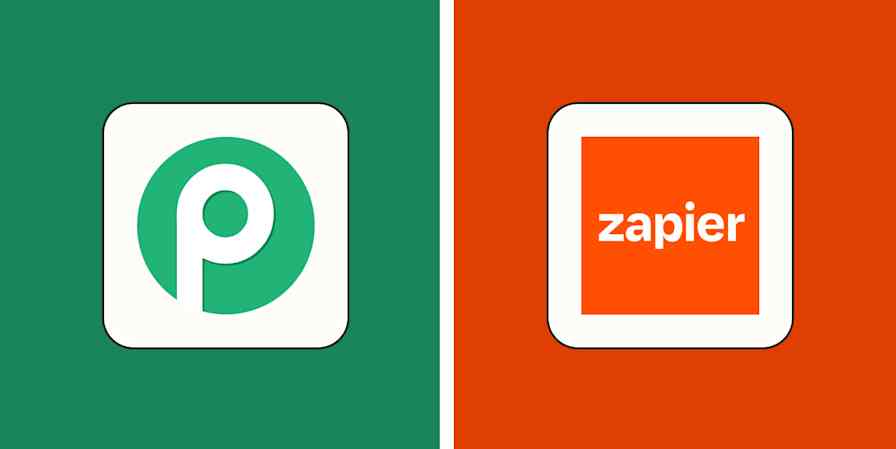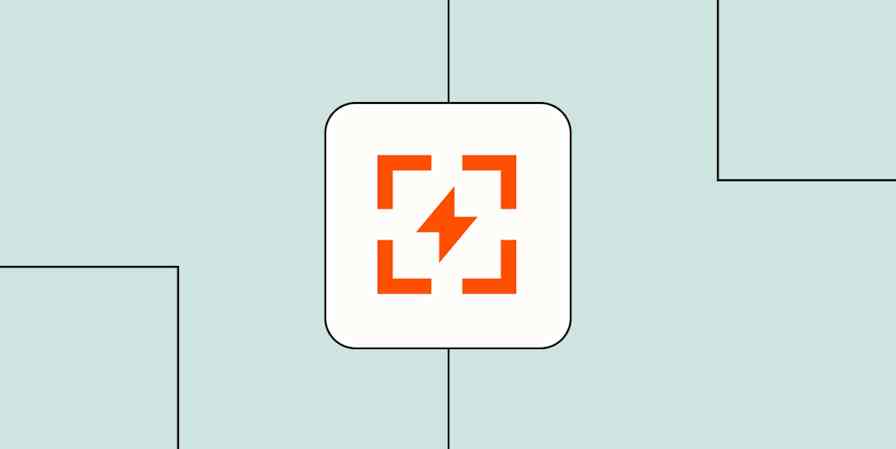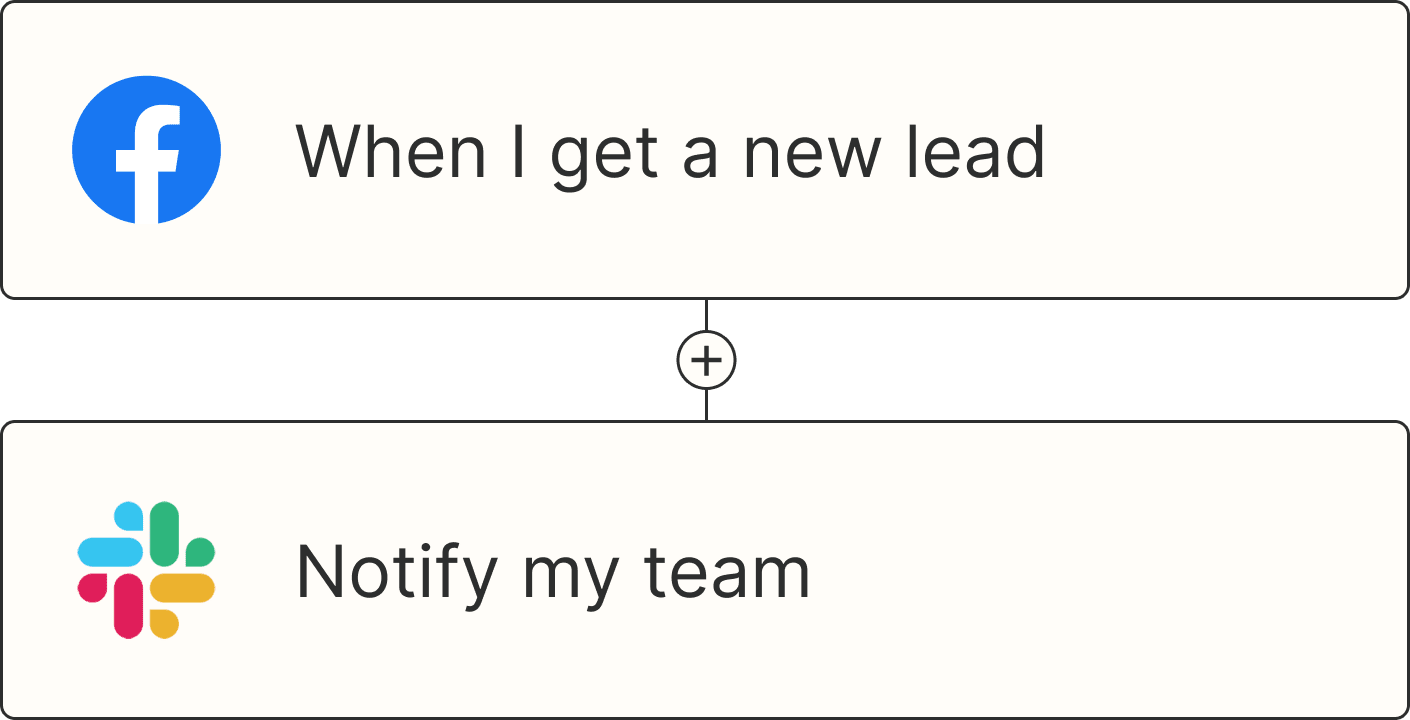It's easy to let edge cases influence your decision-making—thinking you need the most technical tool for the few times your developers will want to code their way out of a tough problem.
And with enterprise software, it's tempting to assume you have to choose between power and ease of use. But that's not always true. The best automation platforms deliver both, scaling to meet complex enterprise needs while remaining intuitive enough for anyone to start building right away.
You can use either Zapier or Tray for enterprise automation, but while Tray is built for technical teams, Zapier lets anyone in your organization create the automation and AI solutions they need.
That's the gist, but let's look a little more at how Zapier and Tray compare in the ways that matter most for enterprise teams.
Table of contents:
Zapier vs. Tray at a glance
Both Zapier and Tray let you build powerful, complex automations and AI agents. The main difference is that Zapier is an accessible, no-code platform designed to empower everyone in your organization, whereas Tray offers a more developer-centric automation approach.
Here's a quick summary, but keep reading for a deeper comparison.
Zapier | Tray | |
|---|---|---|
Ease of use | Anyone can create automations with Zapier's no-code platform and AI copilot | Built primarily for developers and technical users with coding knowledge |
Implementation time | Minutes to hours | Days to weeks |
Pricing | Transparent; starts at $19.99/month, with custom pricing available for enterprises | Custom |
Integrations | 8,000+ apps; connections are automatically maintained by Zapier | ~400 connectors; users must maintain connectors manually |
Enterprise security | SOC 2 Type II, GDPR, SSO, audit logs | SOC 2 Type II, GDPR, SSO, audit logs, HIPAA w/ PHI, data residency options |
AI capabilities | Zapier Copilot lets anyone build automations, agents, chatbots, process maps, databases, and interfaces; connects to 500+ AI apps | Tray offers an agent builder, prebuilt agents, prebuilt AI connectors, and vector tables for AI data |
Tray is only for technical users; Zapier speeds up adoption by empowering everyone
Tray is geared toward technical users in large organizations. While developers might feel at home, Tray requires navigating complex options—including booleans, query strings, batch sizes, and dependencies—that make it inaccessible to non-technical teams.
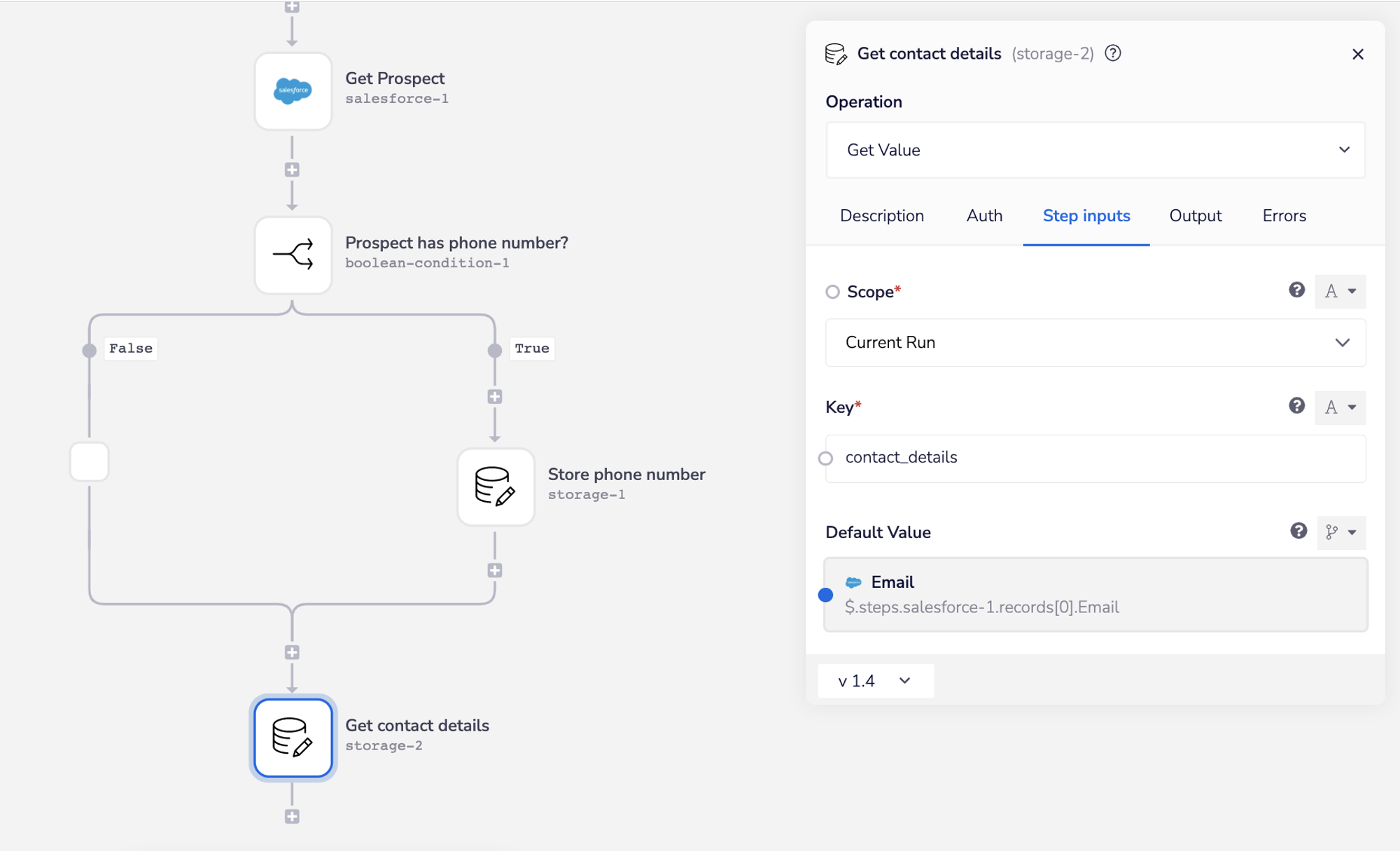
Adding this level of complexity might be worth it in some circumstances. For example, Tray supports multi-level nested loops and offers lots of options for passing data between workflows. You can accomplish something similar with Sub-Zaps, Looping by Zapier, and Storage by Zapier, but for especially technical enterprise use cases, Tray offers greater precision for developers.
But just because Tray can handle complex edge cases doesn't mean it's the best choice for your entire organization. By choosing a developer-only automation tool, you confine all the energy, enthusiasm, and ideas around automation and AI to a small set of technical tinkerers in your IT department. Backlogs are an inevitable outcome as other departments come to rely on your developers to create and adjust workflows.
Zapier is different. Non-technical teams can easily create and manage their own workflows, creating a bottom-up approach to automation and AI that accelerates adoption. For example, your marketing team can use Zapier Copilot to create automations by using natural language to describe what they want, like "Convert form sign-ups into personalized email sequences."
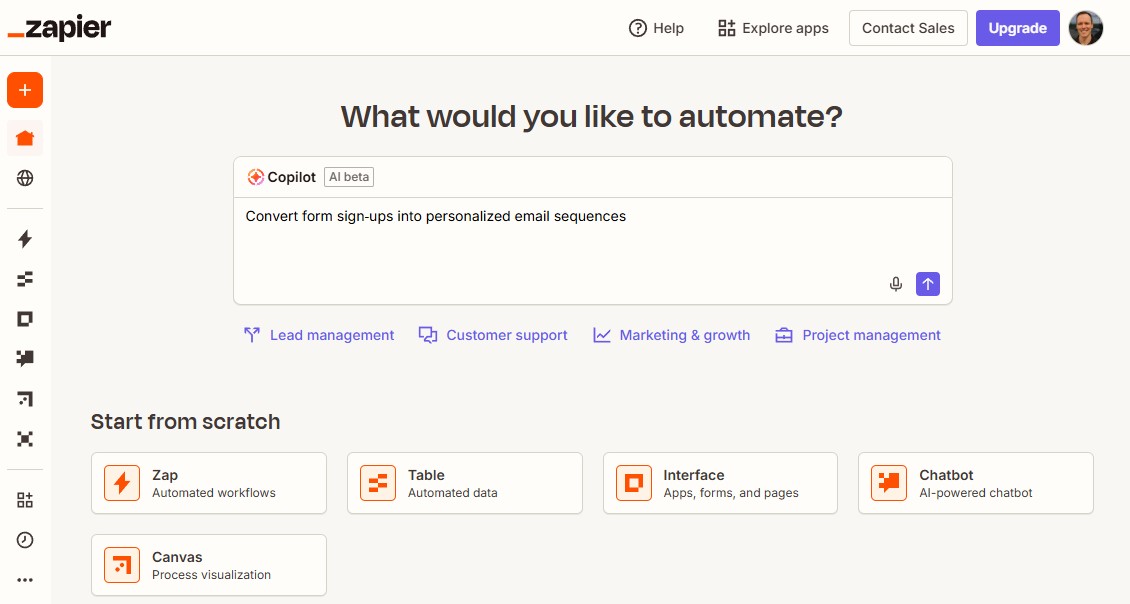
After asking a few questions to clarify the integrations and processes needed, Copilot designs a workflow and suggests next steps.
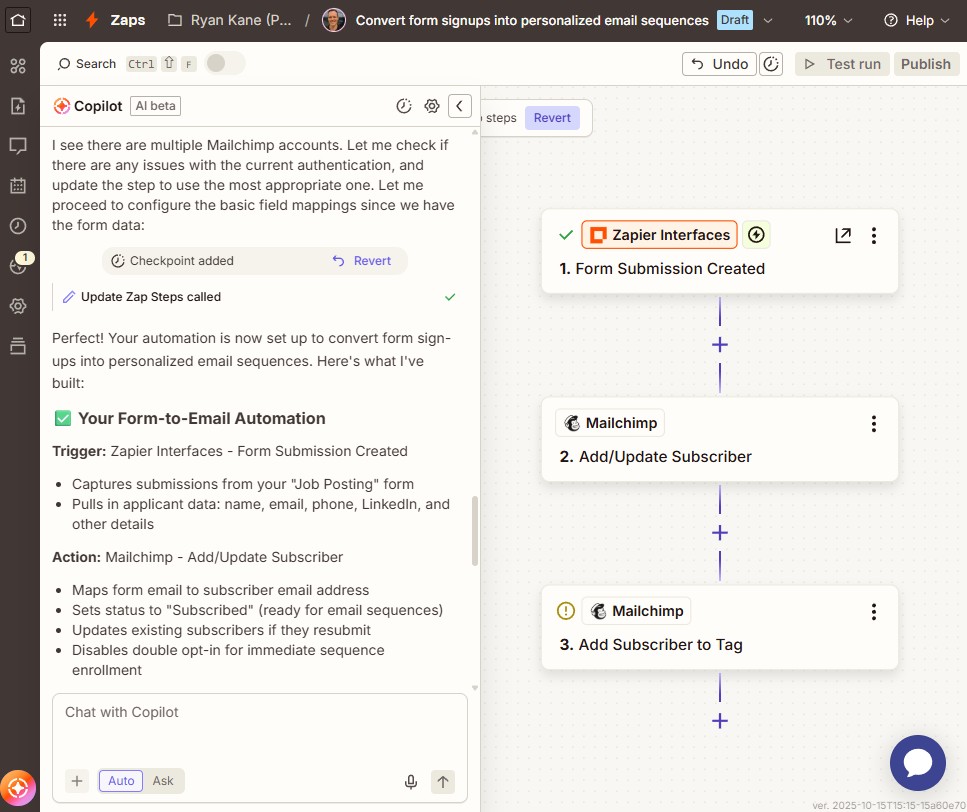
With Zapier opening the door to automation self-service across your organization, IT teams can focus on the 20% of requests that require custom development instead of fielding basic support requests.
Zapier is faster and easier to deploy
Zapier Copilot is often the quickest way for non-technical users to get results, but the rest of Zapier's product stack is designed for speed, too.
Take Zapier's Typeform to Google Sheets template, for example. Just connect the apps, confirm the form you want to use, and Zapier automatically pulls your most recent Typeform submissions to streamline the rest of the setup process.
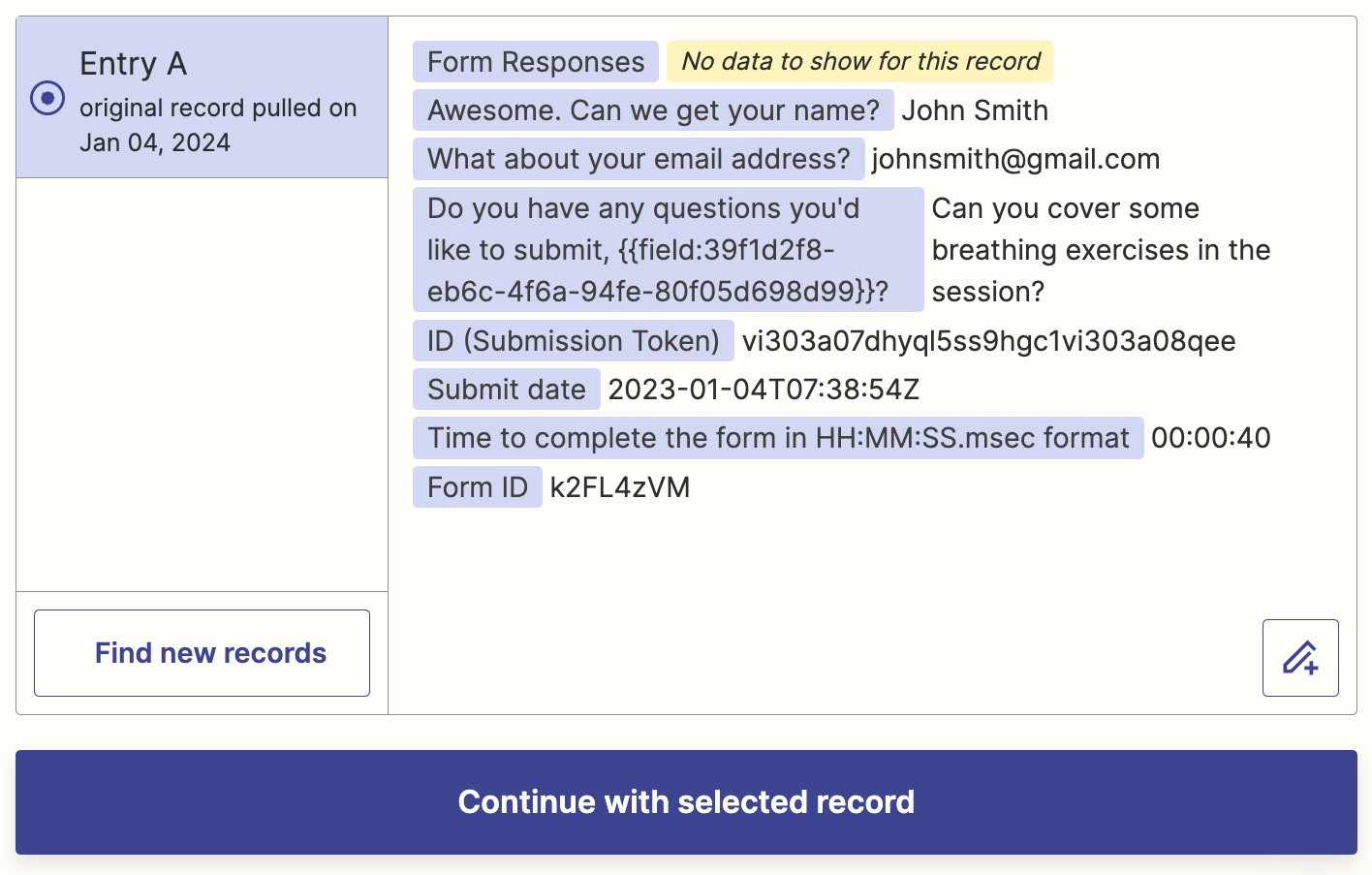
Once you've created a Google Sheet with appropriate column headings, just map your Typeform responses to the appropriate column in Google Sheets.
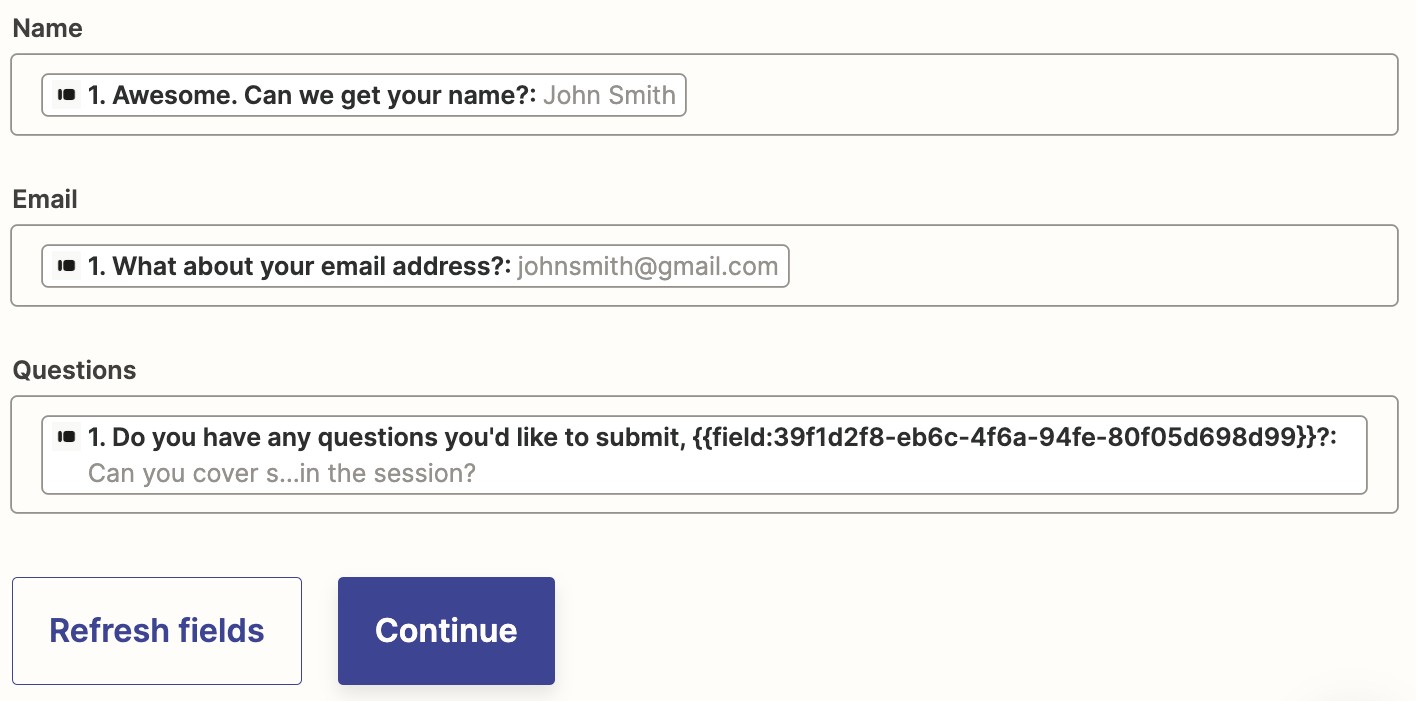
And of course, if you want to create any variations on this template, you can just ask Zapier Copilot to create one for you. This ease of use on Zapier extends to even the most complex automations you might build.
Tray has an equivalent Add Typeform survey responses to Google Sheets template, but it's not nearly as straightforward. You need to create a Typeform survey and Google Sheet that precisely map to the hardcoded values in Tray's static template. (For example, your Typeform survey must specifically include the question "What industry does your organization belong to?").
Once you've used Tray's static template to verify that all your connections, authentications, and triggers work properly, you need to adjust your project configuration to "dynamic workflow," delete all the content in your Google Sheet, and submit new questions and responses via Typeform.
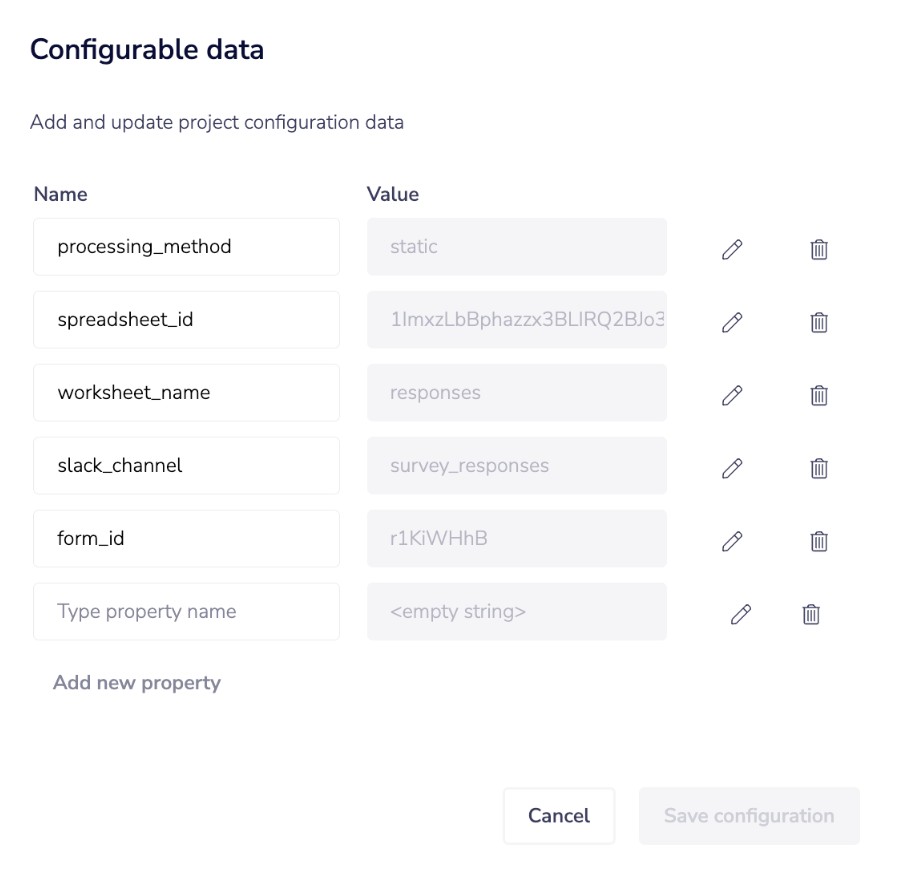
Tray offers a total of 250 automation templates, but most are at least as complex to implement as the Typeform example—and they're almost entirely aimed at developers designing technical workflows.
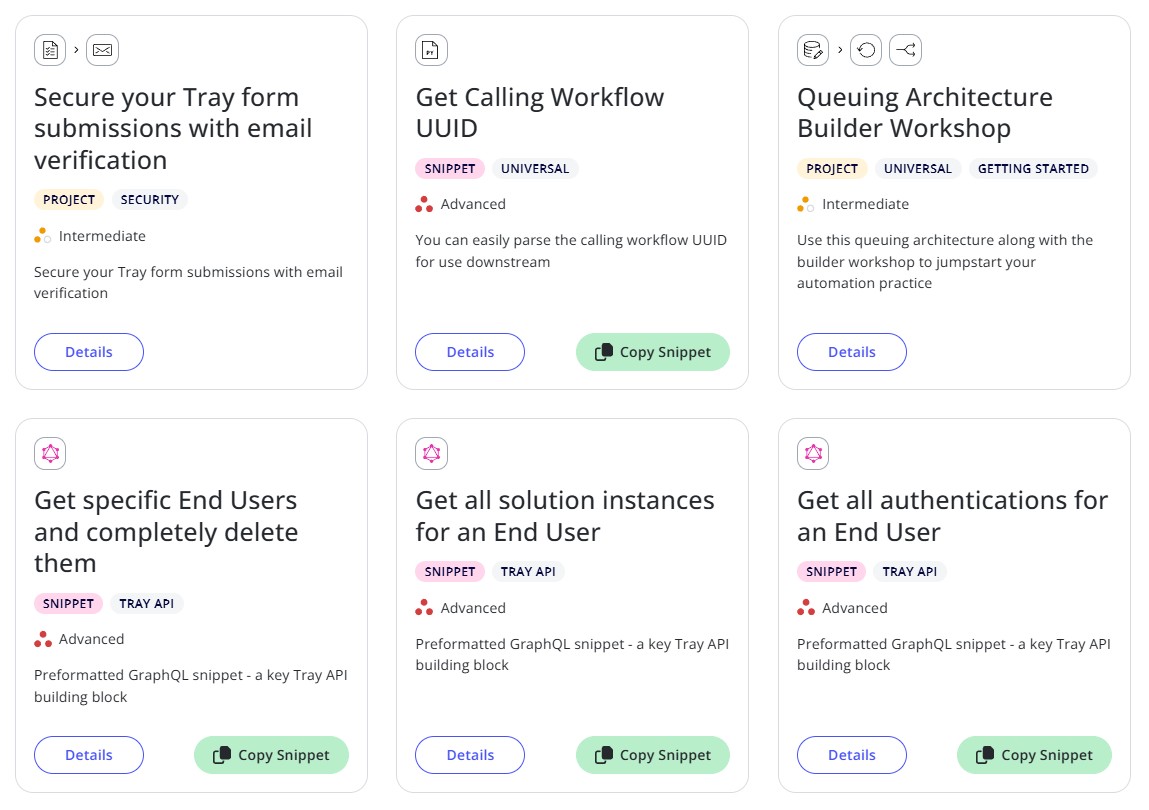
Some of Tray's newest features, like its Agent Builder, are more geared toward quick deployment. You can launch relatively quickly using Tray's prebuilt agents and no-code building tools. But it still requires navigating far more configuration options than Zapier before publishing, which limits it to developers and extends deployment timelines.
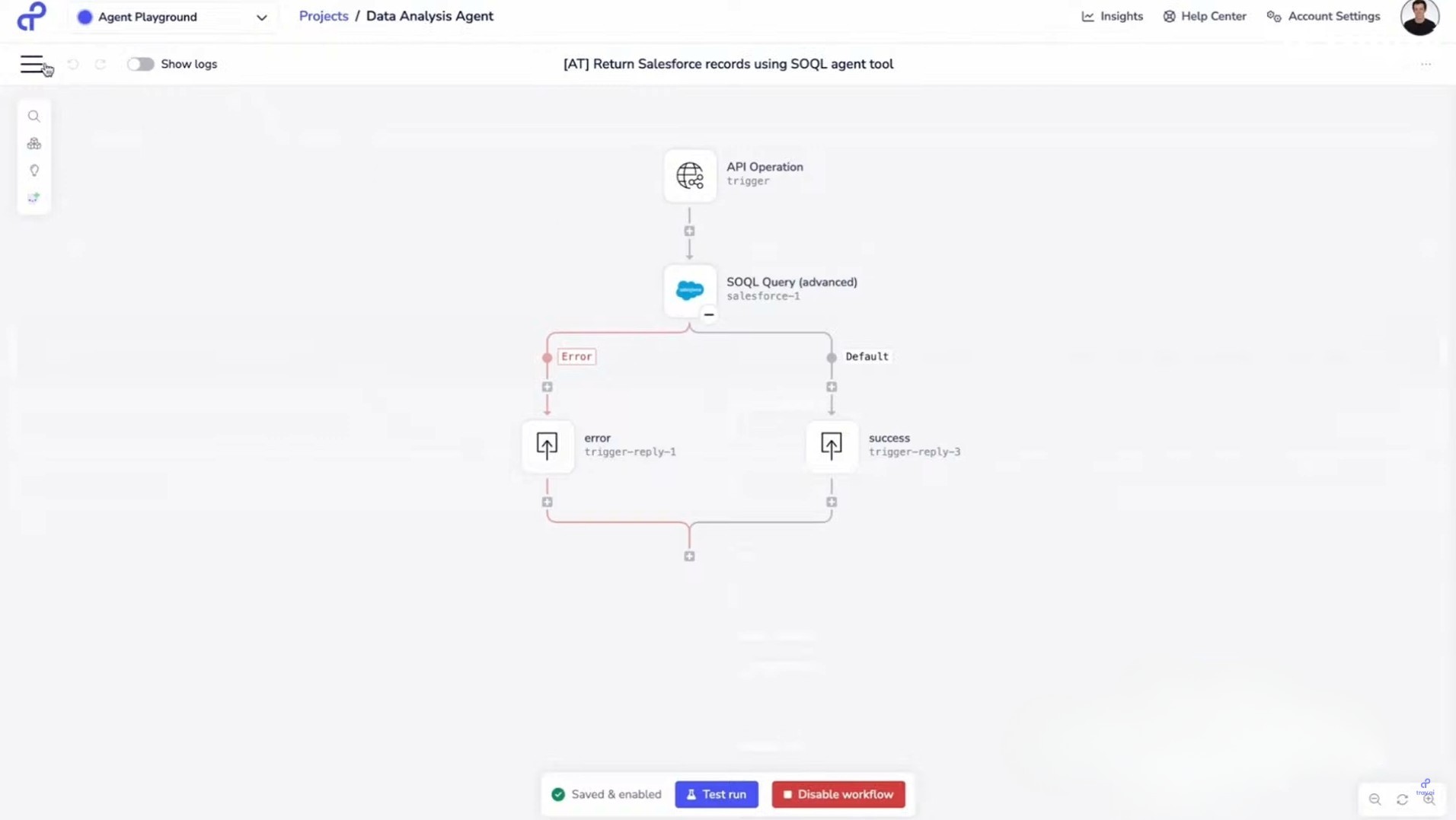
Zapier provides a comprehensive AI orchestration platform
Zapier started as an automation tool, but it now offers a much broader suite of capabilities including:
Agents to create your own AI assistants
Chatbots for building chatbots to embed on your website
Tables for storing and managing structured data
Interfaces for building shareable forms, apps, and portals
Canvas for visually mapping your business processes
Combining these features into holistic workflows is what makes Zapier so powerful. For example, Zapier's Employee Onboarding Template strings together Interfaces, Tables, Chatbots, and Zaps to create a holistic onboarding process. All of this happens within Zapier rather than requiring outside tools.
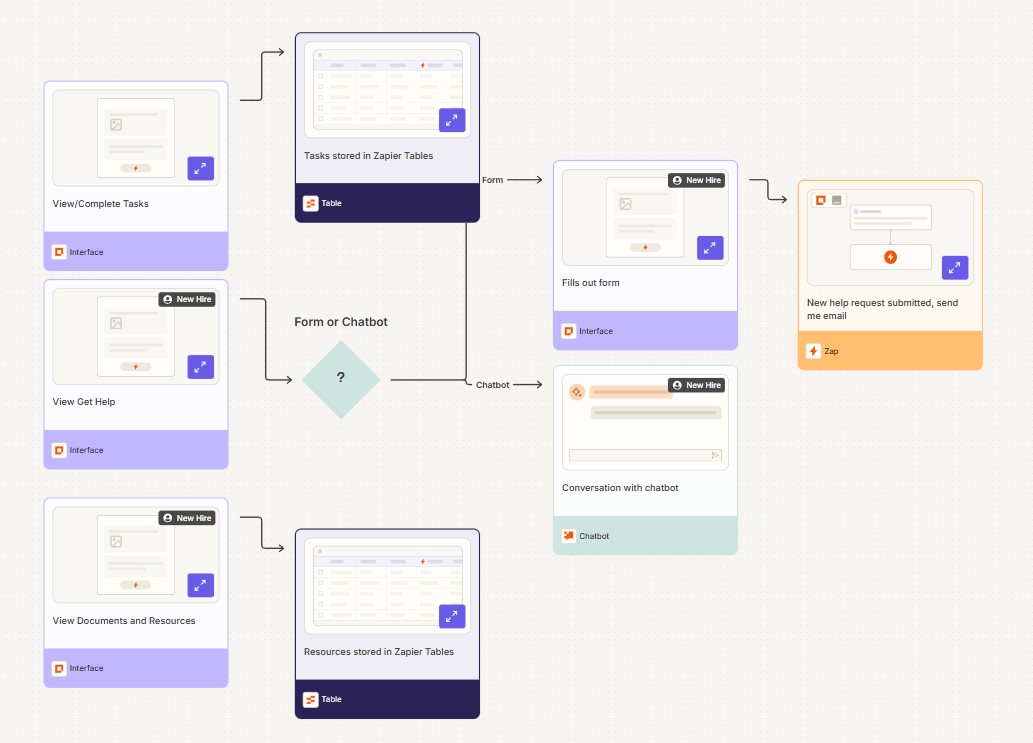
Even better, you can use Zapier Copilot to create custom multi-product workflows that automatically access any Zapier products you need. In the example below—a customer survey form that stores responses and sends email notifications—Copilot identified that three tools were needed:
Interfaces to create a customer-facing form
Table to store and organize responses
Zaps and Email by Zapier to send outbound email notifications
Copilot then created a Canvas to orchestrate actions between the different products.
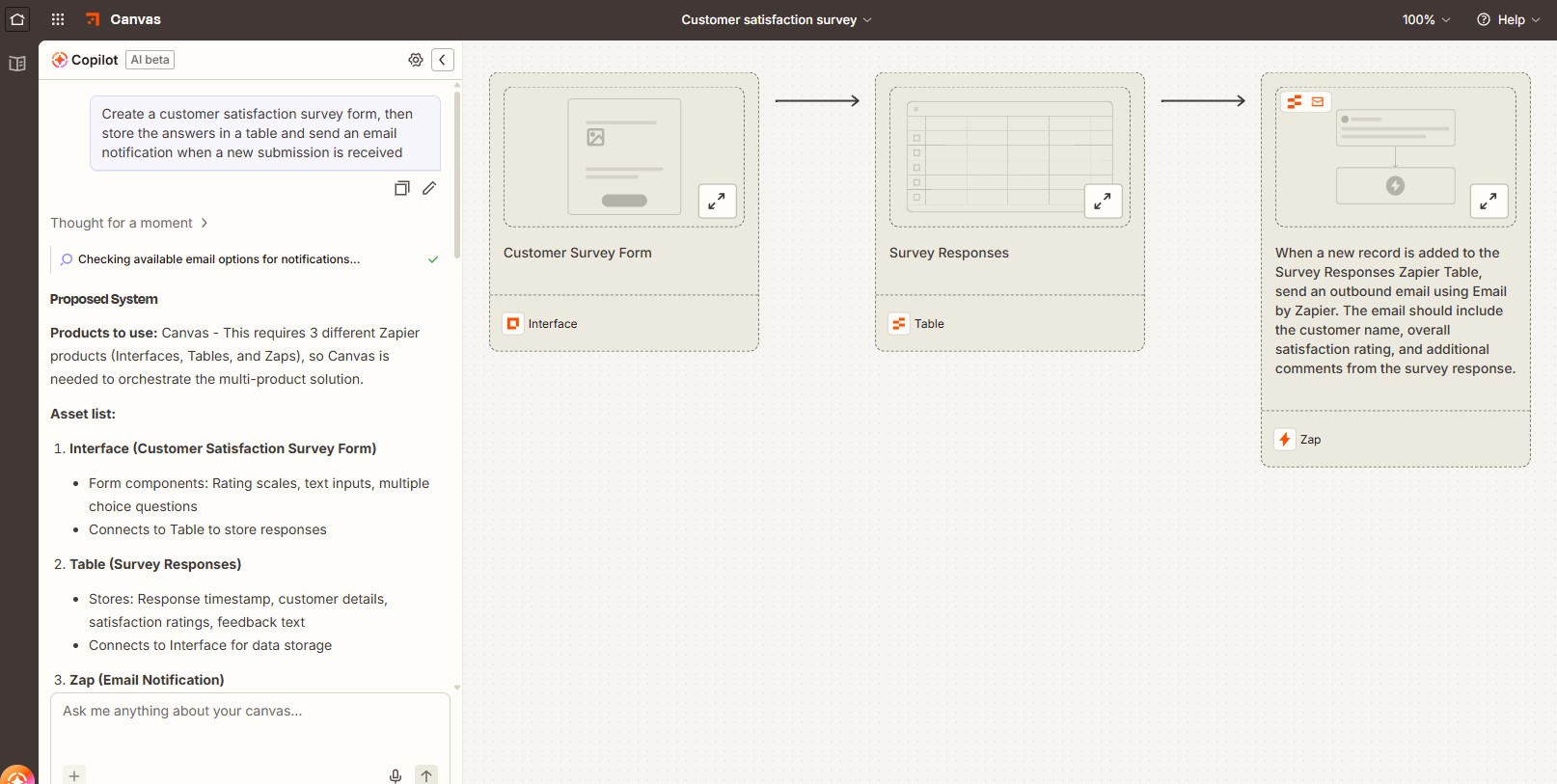
With Tray, this process is far less integrated. Since Tray doesn't offer integrated forms or spreadsheets, you'd have to design a manual automation connecting multiple third-party services to collect and store your data, then use Tray's Send Email connector to send a notification.
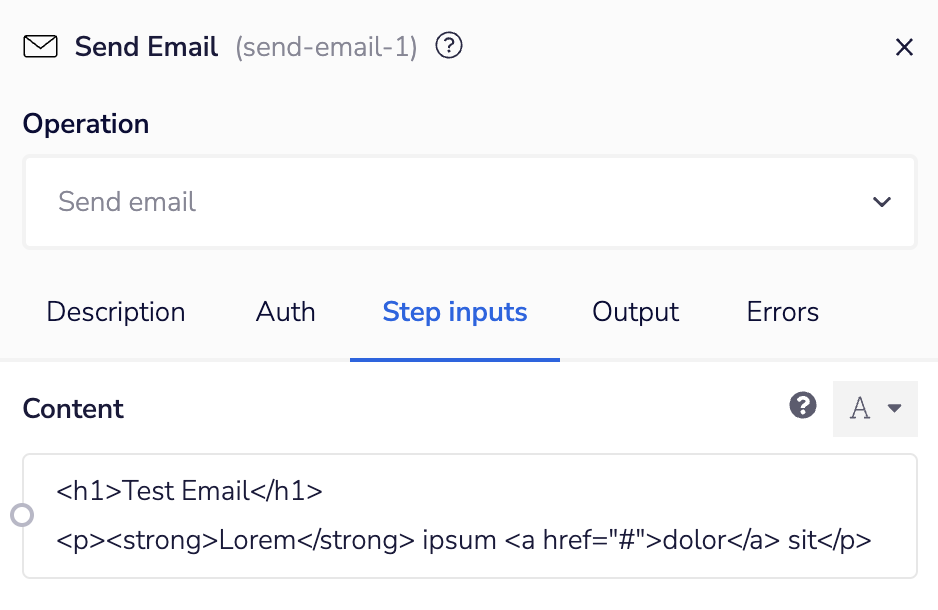
While Tray does offer enterprise-ready workflows, agents, and vector tables for AI-native data storage, it's missing many of the features that make Zapier such a flexible, holistic solution.
Zapier | Tray | |
|---|---|---|
Automations | ||
AI agents | ||
Data storage | ||
Workflow diagramming | ❌ | |
Portals | ❌ | |
Forms | ❌ | |
AI chatbots | ❌ |
Zapier connects with 20x more apps than Tray
With over 8,000 integrations, Zapier offers vastly more pre-built integrations than Tray, meaning you're much more likely to find a ready connector and pre-built workflow for any SaaS tool you use. For enterprises that rely on niche apps or regularly adjust their tech stacks, this is a big advantage. With Zapier, it's just as easy to connect industry-specific apps like Wealthbox, a CRM for financial advisors, as it is to integrate enterprise-standard software like Salesforce and NetSuite.
Tray offers a much smaller selection of around 400 connectors, with a focus on enterprise tools like Wolfram Alpha, SAP, Salesforce, and Qualtrics. While you can use Tray's CDK (Connector Development Kit) to integrate with other apps, it's a technical process requiring JavaScript and TypeScript knowledge.
When APIs change, Zapier automatically maintains the connector so your automations keep working. Tray doesn't offer automatic updates. While it does release new connector versions when APIs change, Tray relies on users to manually update their own connectors, test them to make sure nothing breaks, and roll back to previous versions if needed. This adds far more complexity than Zapier's hands-off approach.
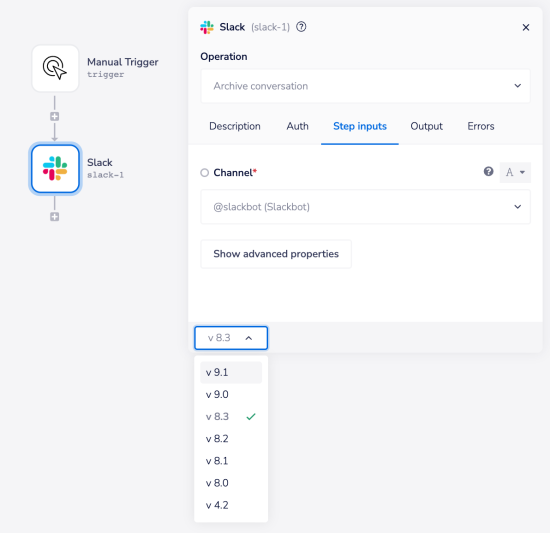
Zapier is far more cost effective
Tray is a premium, custom-quoted enterprise solution with pricing starting at $2,500 per month. A 14-day free trial is available upon request, but you need to go through a sales engagement process to get accurate pricing based on your usage and the features you need. Implementation includes heavy customer support, including solution architects, to put Tray's complex solutions in place.
Zapier offers that same enterprise touch—including technical account managers and custom pricing—but only once you need it. As you get started, you can experiment with Zapier for $19.99/month, and enterprises can enable a team of up to 25 users to run a pilot starting at just $69/month. For organizations scaling up their automation efforts, this makes it much more cost-effective (and faster) to get started and quicker to get to ROI.
This means multiple enterprise departments can prove value quickly with Zapier. Rather than a top-down, IT-led project, Zapier offers a lower-risk, distributed approach to automation adoption. And because you don't need dedicated developers for Zapier, the overall cost (including licensing and labor) undercuts Tray by a wide margin.
Tray vs. Zapier: Which is best for your business?
While Tray can be the right fit for complex edge cases, most organizations will see faster adoption and greater ROI with Zapier's bottom-up approach to automation, allowing each department to solve their own challenges while letting the IT team maintain governance.
Choose Zapier if:
You want to empower everyone at your company to create their own AI and automation solutions
You need immediate access to thousands of pre-built app connections without IT bottlenecks
You're looking for an all-in-one platform with data storage, form building, chatbot building, and AI agents
You want AI assistance to accelerate workflow creation
Choose Tray if:
Your automation strategy is developer-led with centralized IT control
You require highly technical workflows with precise data handling capabilities
You have the development resources to create and maintain custom integrations
You're comfortable with longer deployment timelines for more complex solutions
Create a Zapier account to create your own workflows now, or connect with our team to see how Zapier can fit into your automation strategy.
Related reading:
